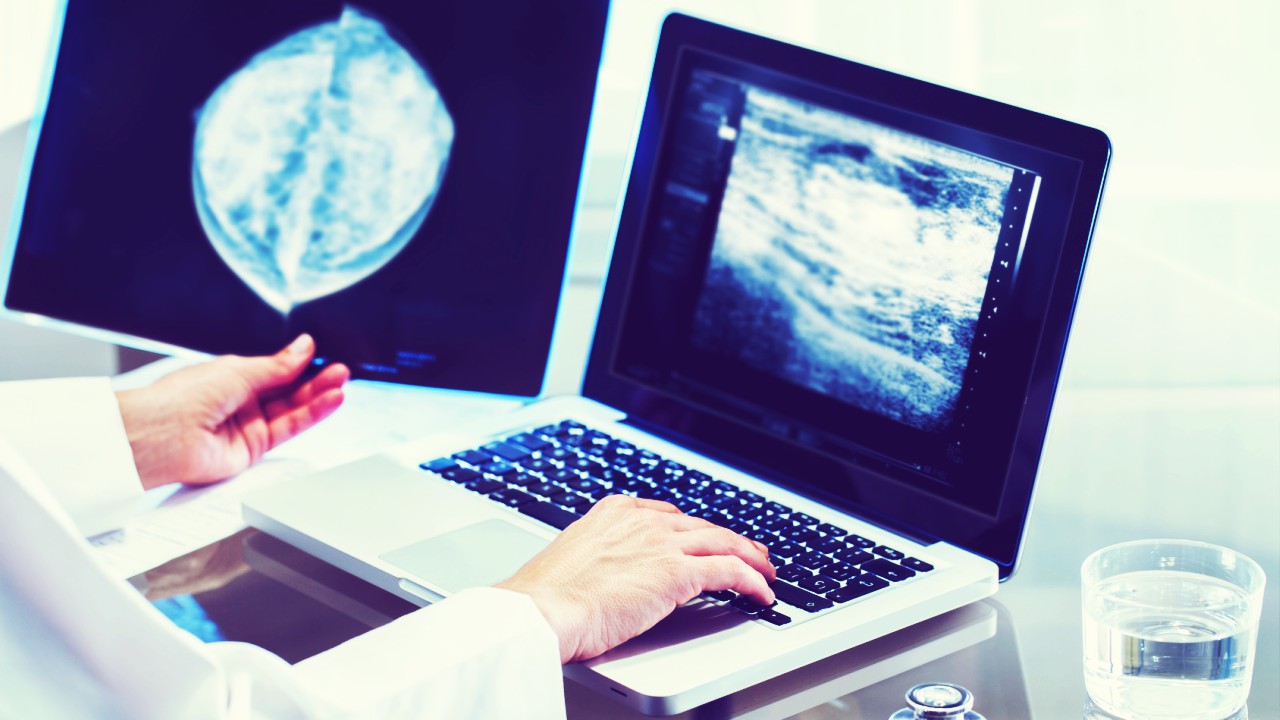For the last 30 years mammography has been the gold standard in detecting and diagnosing breast cancer. For millions of women, the X-ray screening test has saved lives by finding breast abnormalities, sometimes before the women themselves knew any problem existed.
While mammography has been an important tool in the fight against cancer, it’s not perfect. For example, it can give false positive results — abnormal areas inside the breast, but where no cancer is present; or false negative results — where the breast tissue may look normal but cancer is actually present, leading to delays in treatment.
False-negative results occur more often among younger women because younger women are more likely to have dense breasts, however, older women taking menopausal hormone therapy may also experience a false negative result.
Mammograms also expose women to low doses of ionizing radiation. While accepted as safe, they still carry some risk. X-ray exposure during pregnancy can damage an unborn child, so always tell your X-ray technician if you’re pregnant or possibly pregnant.
Another risk, though low, is a person undergoing repeated X-ray exposure can potentially develop cancer. For most women though, the benefits of mammography outweigh the risk, according to the National Cancer Institute (NCI), part of the Institutes of Health.
In the last 15 years, new technology has vastly improved the mammogram from our mothers' and grandmothers' era. In most areas of the country, digital images have replaced the old film type of X-ray images.
The digital format provides higher quality images that can be stored and electronically shared by doctors, making long-distance consultations easier and result wait times shorter. Digital images often mean patients are exposed to less radiation since fewer images are needed.
While the NCI strongly encourages women age 40 and older to have a mammogram every one or two years, it is also supporting the development of several new technologies to detect breast tumors. This research ranges from methods being developed in research labs to those that are being studied in clinical trials.
This week, the Optical Society of America announced research from the Netherlands is in the first-phase clinical testing of a new device that uses light induced sound — photoacoustics — to provide high-contrast images of breast tumors without radiation.
This technology, called optical mammography, reveals malignancies because blood hemoglobin readily absorbs the longer, redder wavelengths of light, revealing a clear contrast between blood-vessel dense tumor areas and normal vessel environments.
The specialized device, named the Twente Photoacoustic Mammoscope (PAM), is built into a hospital bed where the patient is exposed to a painless laser light. The researchers say the photoacoustic images produce a “higher contrast than provided by the conventional X-ray mammographies.”
PAM was first tested in 2007. After several modifications, the researchers began testing the light-based system's ability to distinguish between benign and malignant tissue with ultrasound to determine if PAM could hit its target.
For the clinical trial PAM was tested on 12 current breast cancer patients.
"While we're very early in the development of this new technology, it is looking promising," said Michelle Heijblom, a Ph.D. student at the University of Twente, and one of the researchers working on the project.
“Our hope is that these early results will one day lead to the development of a safe, comfortable, and accurate alternative or adjunct to conventional techniques for detecting breast tumors."
The next step is to tweak PAM's targeting ability and then evaluate less obvious potential tumors, benign lesions, and normal breasts with it, the researcher said in a written statement.
The clinical trial results are published online in the open-access journal Optics Express.
Lynette Summerill is an award-winning writer and Scuba enthusiast living in San Diego, CA with her husband and two beach loving dogs. In addition to writing about cancer-related issues for EmpowHER, her work has been seen in newspapers and magazines around the world.
Sources and consumer information:
National Cancer Institute Fact Sheet. Mammograms. Access online at:
http://www.cancer.gov/cancertopics/factsheet/detection/mammograms
Understanding your diagnostics: mammography. American Cancer Society. Access at: http://www.cancer.org/Treatment/UnderstandingYourDiagnosis/ExamsandTestDescriptions/ImagingRadiologyTests/imaging-radiology-tests-mammogram
Visualizing breast cancer using the Twente Photoacoustic Mammoscope: What do we learn from twelve new patient measurements? Optics Express, Vol. 20, Issue 11, pp. 11582-11592, 2012 http://www.opticsinfobase.org/oe/abstract.cfm?uri=oe-20-11-11582
Reviewed May 8, 2012
by Michele Blacksberg RN
Edited by Jody Smith






Add a CommentComments
There are no comments yet. Be the first one and get the conversation started!